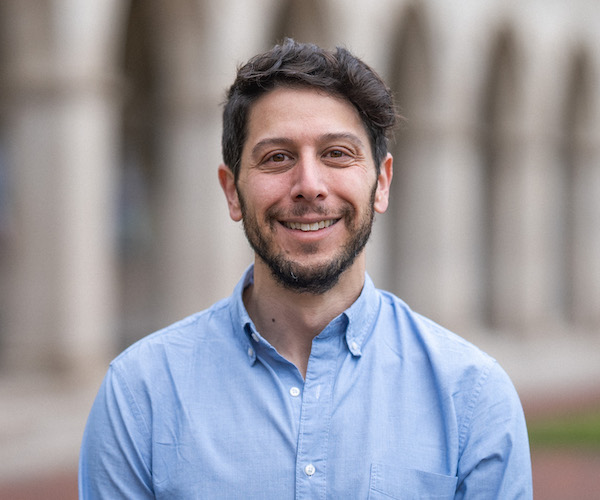Ari Stern and graduate student Sanah Suri are developing new mathematics to describe the simulation of complex dynamical systems, a theoretical endeavor with real-world implications.
Basic math can tell us how the world is changing at any moment in time. If you know all the forces acting on a billiard ball, a vehicle, or a planet, it’s easy to figure out where each object will be an instant later. But knowing where the Earth will be 100 or 1 million years from now requires a different approach powered by computer algorithms. Ari Stern, associate professor of mathematics, has spent his career thinking about the mathematics of simulating complex dynamical systems, work relevant to the activity of neurons as well as the future of galaxies.

Stern and graduate student Sanah Suri recently published a paper in the Journal of Computational Dynamics describing a new mathematical approach to this problem. They discussed their work with the Ampersand.
What is the main purpose of your research?
Stern: We’re interested in using math to describe things varying in space and changing over time. It’s the sort of problem physicists and mathematicians have been struggling with for centuries because the equations are simple to write but difficult to solve. Small changes can add up over time in unpredictable ways, and there’s usually no formula to tell you what happens.
Very simply, we’re looking at ways to simulate dynamical systems by slicing a long interval of time into many short intervals where the changes are easier to predict. If you can add those different slices together in the right way, you can get a complete picture. It’s a method called numerical integration, and it’s the starting point for all our work.
Your latest paper is about functional equivariance. What is that?
Stern: That’s a term I first introduced in a 2022 paper co-authored with Robert McLachlan, a mathematician at Massey University in New Zealand. Often, dynamical systems have important quantities that don’t change over time, called invariants. For example, if you’re describing the solar system, the individual planets move but the total momentum won’t change, following Newton’s laws of physics. A good simulation of the solar system should also keep these quantities invariant.
We showed that if an algorithm gets these invariants right, then it also does a better job simulating quantities that do change. For example, you can imagine an oscillating spring losing energy over time due to friction. Functional equivariance describes how important quantities change over time in the simulation.
Suri: I see functional equivariance as a powerful tool for describing many different systems. It’s essentially the entire focus of my PhD research, and it’s what I want to study going forward.
When you study these simulation algorithms, do you already have a real-world application in mind?
Stern: At the start, we’re thinking abstractly about the math. But once the theory is developed, it could be applied to the solar system, molecular dynamics, or any number of other systems.

Suri: As a student, it’s helpful for me to think about real-world possibilities when I’m doing the math. Lots of complicated systems can be broken down into different parts. I think about predator-prey dynamics or even the motion of a swinging pendulum. You could observe different aspects of these systems and simulate how they change over time.
Your research is supported by the National Science Foundation. Does the NSF often fund mathematical research?
Stern: The NSF has a Division of Mathematical Sciences that funds all sorts of mathematical research, and my work is funded specifically by the Computational Mathematics program. Some of this research may later be translated to a specific application, but some of it is math for math’s sake, which is also important and valuable.
Do you collaborate with other WashU researchers outside of mathematics?
Stern: A few years ago I co-authored a paper with Barani Raman, a professor of biomedical engineering at the McKelvey School, and Zhengdao Chen, an undergraduate student we both advised. We developed algorithms to simulate spiking neurons that improve on the standard algorithms used in computational neuroscience. I also spend a fair amount of time speaking with researchers in other departments in Arts & Sciences. I hope there will be more collaborations in the future.
Header photo credit: NASA/JPL




